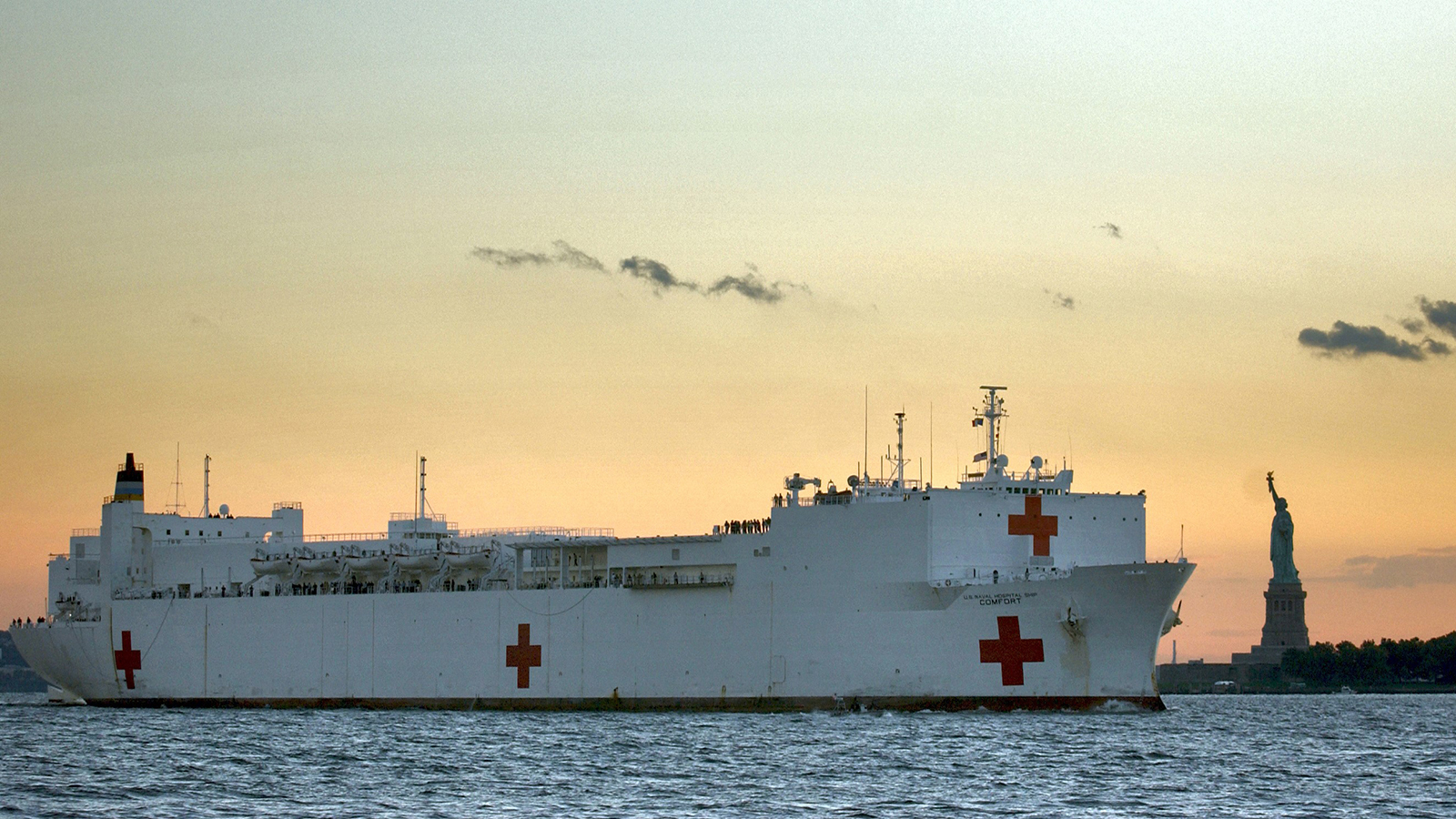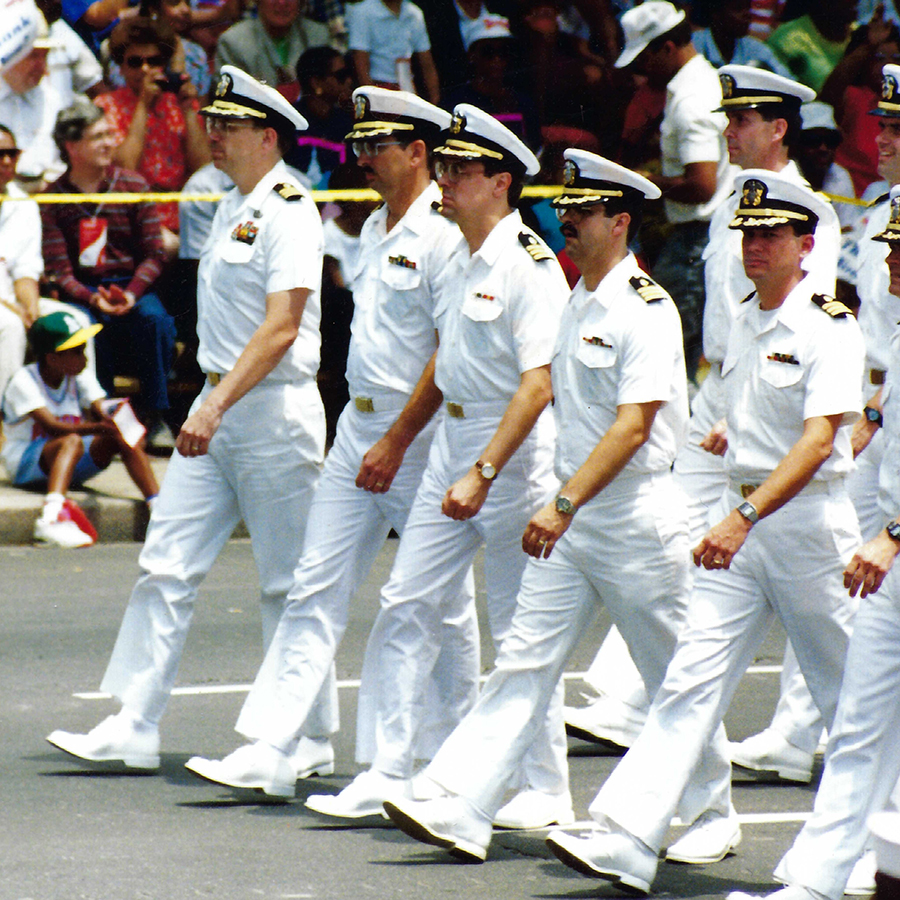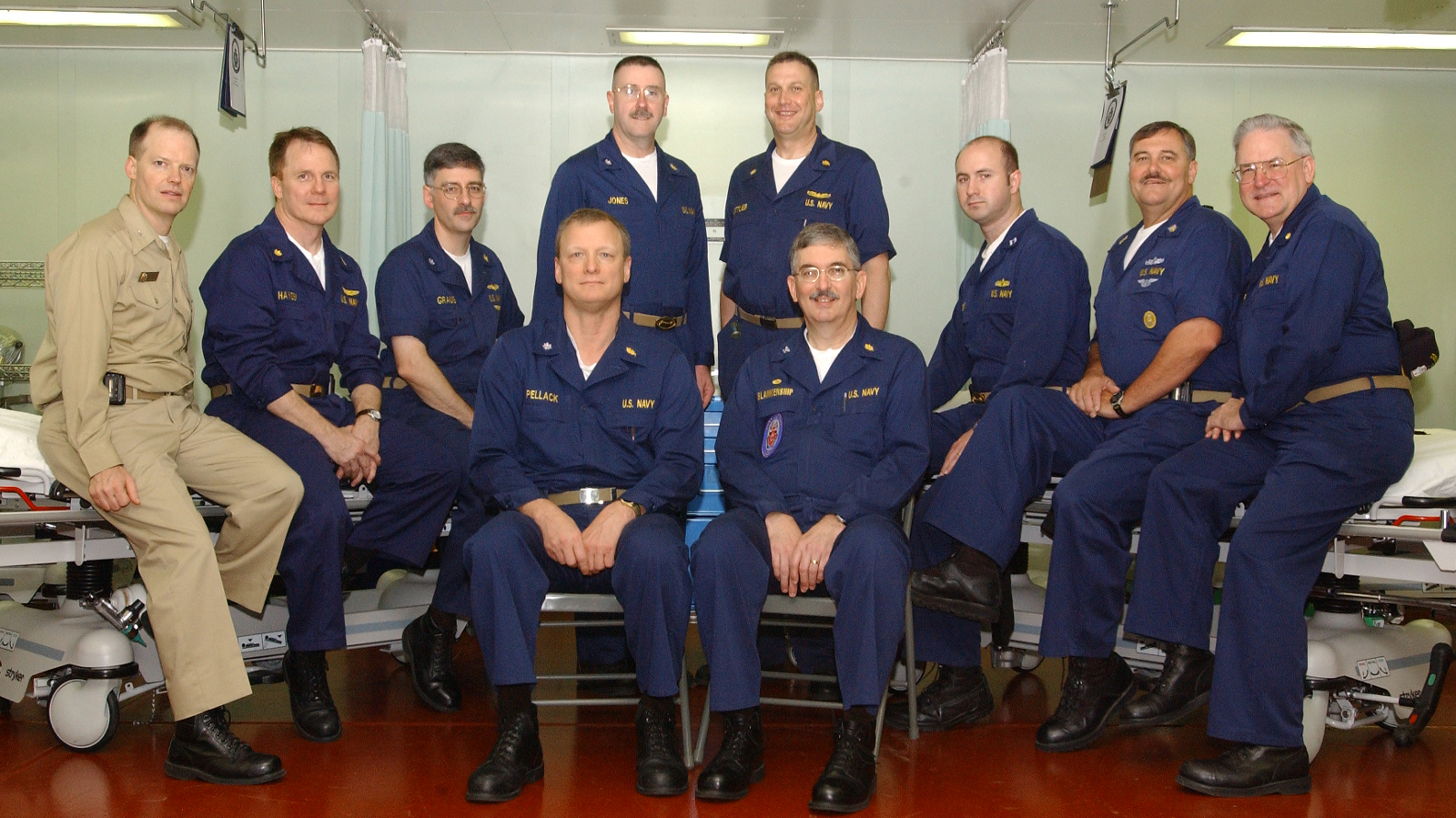Comfort Commander
U.S. Navy doctor's service-oriented life has Baylor roots
Demographers and sociologists debate generational timelines. While some say a generation spans 18 to 24 years, others look to significant events that shape a generational shift. The latter theory considers whether a person is old enough to consciously discern a difference in life before and after the event.
Some point to events that take place over a stretch of time as the demarcation between one generation and the next. Examples include the Industrial Revolution, World War II and the civil rights movement. Consider how people born in the past three years and thereafter will have no recollection of what life was like prior to the COVID-19 pandemic.
However, others point to more singular moments in time — events from which “where were you when” questions arise. Examples include the attack on Pearl Harbor and the Apollo moon landing.
The morning of Sept. 11, 2001, Dr. Charles L. Blankenship, B.A. ’71, was in Orlando, Florida, attending a panel discussion about military support for civilian casualties in disasters. At the time, Blankenship was the hospital commander of the USNS Comfort, one of the U.S. Navy’s two Mercy-class hospital ships. The discussion included the assistant director for emergency operations response in New York City, the head of emergency operations in Washington, D.C., and others from the Pentagon.
“A gentleman from New York walked into the room and said, ‘If you’re interested, somebody flew a plane into one of the World Trade Center towers,’” Blankenship says. “We were all thinking it was something like a Piper Cub. Five minutes later, he came running back into the room.”
Blankenship spent much of his 14-hour drive to Washington that day on the phone, discussing potential uses for the USNS Comfort and awaiting his orders. Three days later, the ship docked at Pier 92 in Manhattan. While the Comfort’s clinic treated people for minor injuries, its primary role was more than a hospital ship.
“We ended up being a hotel for all the people that came from all over the country and all over the world to help out at the World Trade Center site,” Blankenship says. “We stayed open 24 hours a day and filled every bed on that ship.”
A small number of relief workers bunked on the Comfort the first night, but word quickly spread at the World Trade Center site that beds, meals, showers, clothing and laundry services were available on the ship. The Comfort’s team of Navy psychology personnel provided mental health support for people working at the World Trade Center site and for people who had lost loved ones in the attack.
Additionally, the ship housed New York-area massage therapists, who helped those working at the towers — not all of whom were human.
“One night, the cadaver dogs came on board with their handlers,” Blankenship says. “One of the massage therapists asked if the dogs would like massages, and the handler said, ‘Well, let’s see.’ The next night, when the dogs came on board, they went straight to the massage therapist.”
It was a surreal time, indeed. The first night he was in the Big Apple, Blankenship wrote letters to his wife and children. “After what has happened, our lives are changed forever,” he wrote.
The time aboard the Comfort in New York was part of Blankenship’s more than 30 years of service in the Navy. He initially retired from the service in 1996 but was recalled to active duty the following year in retired/retained status. He “finally” retired from the Navy in 2011 with the rank of captain.
“I would never have gotten into medical school without the interaction with people that shared my Christian background. It had a lot of influence in how I dealt with my life.”
Blankenship’s military career included numerous assignments stateside and abroad. He was commanding officer of the Comfort’s medical treatment facility from 1992 to 1996 and again from 2000 to 2004. Previously, he was head of surgery for that facility during Operation Desert Shield and Operation Desert Storm in the early 1990s. Blankenship served during Operation Iraqi Freedom both on the Comfort and as chief of professional services for the U.S. Marine Corps surgical sites in Anbar Province, Iraq. He also was director of trauma for NATO Role 3 Hospital at Kandahar Air Field in Afghanistan during Operation Enduring Freedom.
Additionally, Blankenship was chief of general surgery and program director for the general surgery residency program at National Naval Medical Center in Bethesda, Maryland — what is now known as Walter Reed National Military Medical Center — from 1990 to 1996. During that time, he initiated a comprehensive breast cancer center, which is now a stand-alone center at Walter Reed.
From 2004 to 2006, Blankenship was assistant deputy chief for fleet operations support and future plans and strategies with the Navy Bureau of Medicine and Surgery in Washington, D.C. He completed his military career as a general surgeon and casualty ward medical officer at National Naval Medical Center.
Texas Born, Baptist Bred
Blankenship was born in Marshall, Texas, and his family moved to Texarkana, Texas, before his first birthday. He spent his formative years living in a house across the street from the Federal Correctional Institution along what locals called “Prison Road.” It was during this time that Blankenship had his first recollections of going to church.
“I grew up at First Baptist Church in Texarkana. I remember going to Sunday school and my mom giving me pennies to put in the offering plate,” he says.
The family moved to a different part of Texarkana when he was in elementary school, but church remained a steady part of his life. He remembers Sunday evenings in training union and Wednesday nights in Royal Ambassadors and choir practice.
Blankenship graduated from Texarkana’s Texas High School, where a teacher who was a former Baylor student suggested that he look into the University. He applied and was accepted, which brought his mother to tears.
“She didn’t tell me until many years later that she cried all night because she didn’t know how to tell me that they couldn’t afford to send me to Baylor,” Blankenship says. “But I had done odd jobs all my life, and I had started a savings account.”
Blankenship says he “worked his rear end off” the summer before starting Baylor, hauling garbage and cleaning outhouses for the Corps of Engineers in Texarkana. His work ethic did not wane once in Waco as he landed a job working in Memorial Dining Hall. He kept a diary of every penny spent his freshman year: $1,700, including tuition, books, fees and living expenses.
“I spent pretty much my entire Baylor career working in the Memorial kitchen and going to class,” he says.
Having grown up in the church, Blankenship wanted to attend a faith-based college. Baylor was an easy choice. “If you wanted to go in the right direction, there were plenty of opportunities at Baylor that you didn’t have at other schools,” he says. “That’s one of the reasons I went to Baylor, and I haven’t regretted it at all.”
Blankenship’s father was a U.S. Army medic in World War II and recognized his son’s potential as a surgeon. As a child, Blankenship would dissect birds and squirrels he shot with his BB gun. He was keenly interested in biology and anatomy in high school, and he was a pre-med biology major in college. One of Blankenship’s freshman classes was a chemistry course taught by David E. Pennington, Ph.D., who was in his first year teaching at Baylor.
“After our final exams, I walked into his office to see what I scored,” Blankenship says. “He looked at me and said, ‘Smile for me. I want to see if you have any skin left on your teeth.’ But I did OK.”
Blankenship was a member of Alpha Epsilon Delta, the national health preprofessional honor society, and served as president as a senior. After graduating from Baylor, he attended the University of Texas Health Science Center at San Antonio on a Navy Health Professions Scholarship.
While completing a residency at Oak Knoll Naval Hospital in Oakland, California, Blankenship met a Navy nurse named Susan Reed. They married, and three of their four children were born in Oakland. Blankenship was stationed at Naval Submarine Base New London in Connecticut (where their fourth child was born) as a general surgeon before joining the National Naval Medical Center.
Continual Service
Despite being the son of a veteran, Blankenship did not initially aspire to a military career. He planned to practice medicine in the civilian world, but the Navy Health Professions Scholarship was too beneficial to decline.
“You’re required to serve one year of active service for every year they pay for your education,” he says. “I enjoyed my training so much that I stayed on active duty.”
Blankenship entered private practice in Bethesda after initially retiring from the Navy in 1996. However, he quickly found practicing medicine to be quite different in the civilian world.
“I was having to argue with someone in insurance every day to be able to do the right thing for a patient,” he says. “It looked to me that some people in medicine were more interested in making money than they were in taking care of patients. In military medicine, there are some restraints to not do things out of your budget, but you do what you think is appropriate for a patient to help them get well. That was probably the major reason I went back on active duty.”
Blankenship again retired from the Navy in 2011 and returned to Texarkana. For three years, he taught family medicine residents about the diagnosis and treatment of breast disorders as a volunteer faculty surgeon at the University of Arkansas Medical System Southwest. After a year off to spend time with family, Blankenship joined the Collom and Carney Clinic as medical director for the Advanced Wound Healing and Hyperbaric Center at Wadley Regional Medical Center.
“It took me a long time to get accustomed to not waking up at a quarter to five every morning,” he says.
While serving in Afghanistan, Blankenship developed a neurologic condition that eventually led to uncontrollable hand tremors. This forced him to cease practicing surgery in 2018; however, he did not leave his life of service. Blankenship currently is the medical director for the First Choice Pregnancy Resource Center, and he is state Republican executive committeeman for Texas Senate District 1. His wife works at a local outreach center and volunteers at Wadley Regional Medical Center.
“Most of what we do is to help people in the community,” he says. “We also do a lot of things with our kids.”
Medicine and military service did not stop with Blankenship and his wife. Their daughter Sharon H.B. Phillips, a registered dietary nutritionist, licensed (RDN, LD), graduated from the Naval Academy and married an Army Apache helicopter pilot. Sons Patrick and Jonathan are majors in the Marine Corps, and their youngest son Dale is an international contracts lawyer in Houston.
“We are a very service-oriented family,” Blankenship says.
While he had a heart for service well before college, Blankenship’s passion grew during his time at Baylor. He remembers as a freshman hearing former Baylor religion professor John B. Davidson, Ph.D., who died in 2008, talk about the importance of faith.
“It really hit home with me,” Blankenship says. “But what most influenced me about Baylor were the interactions I had with people when I was working in the dining facility, learning how to serve people. I would never have gotten into medical school without the interaction with people that shared my Christian background. It had a lot of influence in how I dealt with my life.”


